Authors:
Colonel Viacheslav Semenenko, PhD, Center for Military and Strategic Studies, National Defence University of Ukraine, Kyiv, Ukraine
Major General Myhailo Lobko, PhD, Center for Military and Strategic Studies, National Defence University of Ukraine, Kyiv, Ukraine
DOI: https://doi.org/10.37458/nstf.24.2.2
Review paper
Received: November 24, 2022
Accepted: April 10, 2023
Abstract: The article by Ukrainian authors provides their view on preparation, execution and future prospects of the Russian-Ukrainian war. They examine the most significant military aspects of the Russian military’s preparation and execution of its escalated invasion of Ukraine; the most important military aspects of territorial defence and recent counter offensives; the further prospects in the coming months., the Russian church in Ukraine, the distribution of pro-Russian content in the information field of Ukraine etc.
 All of these events were elements of Russian "soft power" against Ukraine which created favorable conditions for the final blow by the so-called 2nd army of the world.
All of these events were elements of Russian "soft power" against Ukraine which created favorable conditions for the final blow by the so-called 2nd army of the world.
Keywords: Russian-Ukrainian war, Hybrid warfare, Rus-sian aggression, Ukraine, Russian Federation, territorial defence.
Introduction
February 24, 2022 marked the beginning of the second phase of the Russian Federation's hybrid aggression against Ukraine [1, 2]. The Armed Forces of the Russian Federation invaded the territory of a neighbouring sovereign state. This invasion was unprovoked. The only goal was to destroy Ukraine as a state. The invasion was well planned and secured. The Russian Federation carried out actions against Ukraine (Soft power) [3], which became the basis for the decision of the Russian leadership to start the final phase of hybrid aggression – a full-scale armed invasion.
The most significant military aspects of the Russian military’s preparation and execution of its escalated invasion of Ukraine
Most of the forces and troops of the armed forces of the Russian federation were used for strategic deployment with the aim of carrying out armed aggression against Ukraine. The following were subject to strategic deployment: types (kinds) of troops (forces) of the Army (all military districts, 10 out of 12 combined arms and tank armies), Special Operations Forces, Airborne Forces, as well as significant forces of the Military Space Forces, Military Navy. Other troops (forces) were also involved in the armed aggression: Rosgvardiya; Police; Border troops of the FSB, as well as special services.
The strategic deployment of the Russian Armed Forces and other troops (forces) was carried out during joint military exercises with the Belarusian Armed Forces, which began in September 2021 at training grounds in the regions bordering Ukraine and on the territory of the Republic of Belarus.
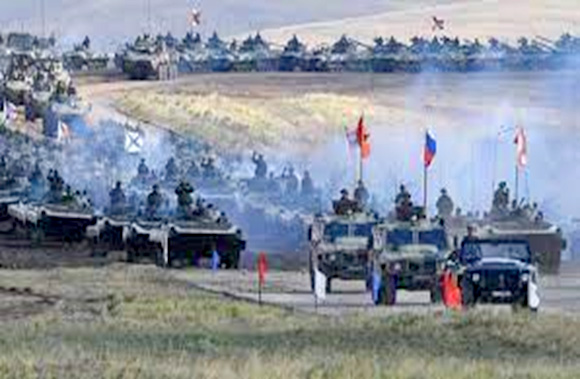
Photo 1: Russian military exercises.
During the exercises, the following were carried out:
- combat firing and training of military units and units of the Army;
- training in the delivery of strikes by missile troops and aviation of the Military and Space Forces;
- preparation of the Black Sea Fleet, reinforced by ships and vessels of other fleets of the Russian Armed Forces, to strike from the sea and land amphibious assaults.
The General Staff planned the strategic deployment and implementation of armed aggression under the direction of the Ministry of Defence of the Russian Federation. The circle of people involved in planning was extremely limited.
The assessment of the military-strategic situation was based on the numerical ratio of forces and means (except for nuclear forces) of the Armed Forces of the Russian Federation and the Armed Forces of Ukraine. This ratio was in favour of the aggressor in significant amounts according to various indicators. Important factors affecting the content of armed aggression were determined during the definition of the Plan.
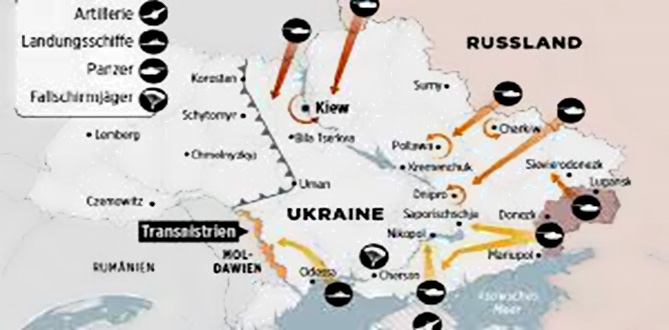
Photo 2: Russian Plan for invasion.
Namely: the presence of significant and influential pro-Russian political forces in Ukraine (especially in the East and South of the country); collaborative elements; an extensive network of agents of the FSB and the GRU of the General Staff of the Armed Forces of the Russian Federation; the presence of pre-trained sabotage forces from the Special Operations Forces on the territory of the border regions of Ukraine.
The assessment of the military capabilities of the Armed Forces of Ukraine was carried out on the basis of the experience of conducting Anti-Terrorist Operations in 2014-2015. It was assessed by the military leadership of the Russian Federation as low and incapable of organized resistance to the invasion. In addition, the vast majority of forces and assets of the Armed Forces of Ukraine were deployed in Donbas as part of the Joint Forces Operation. Military cover of the state border of Ukraine with the Republic of Belarus, Kyiv, North-Eastern and Crimean directions was also absent.
The possibility of a full-scale invasion of the Russian Federation by the military and political leadership of Ukraine was considered unlikely, considering the historical, economic, religious, family ties of the two Nations. Therefore, the preparation of the state for defence was carried out inactively, and its financing was carried out according to the residual principle.
The armed aggression was to be carried out by the permanent composition of the peacetime Armed Forces of the Russian Federation, the available forces without additional draft of reservists or mobilization. As a result of heavy losses in personnel, weapons and military equipment, the leadership of the Russian Federation was forced to carry out a covert mobilization and transfer of troops from abroad. Subsequently, the so-called "partial mobilization" and the removal of obsolete weapons and military equipment from long-term storage were carried out.
The preparation and initiation of armed aggression by the highest military and political leadership of the Russian Federation was carefully concealed. Information about the decision on the Russian attack on Ukraine did not reach even the highest officials of the government and other high-level state bodies. On the eve of the aggression, tasks related to the invasion were delivered only to the highest officials of the Armed Forces of the Russian Federation. The tasks of their units did not reach the junior officers, sergeants and soldiers.
Special attention was paid by the top military and political leadership to the information struggle and destructive propaganda aimed at disorienting the political and military leadership of Ukraine and the world community regarding the military intentions of the Russian Federation. Ministers Lavrov and Shoigu assured even before the invasion that the Russian Federation had no plans to attack Ukraine.
The most important military aspects of territorial defence and recent counter offensives.
It Military units and territorial defence units played a key role in repelling the armed aggression of the Russian Armed Forces at the beginning of the invasion [4]. They acted together with military units of the Armed Forces of Ukraine in the border regions of Ukraine (Kyiv and Chernihiv, Sumy, Kharkiv regions).
The forces and means of territorial defence were not demobilized and deployed before the beginning of the Russian invasion by decision of the military and political leadership of Ukraine. With the beginning of the invasion, the command and personnel of the military units of the territorial defence gathered in an organized manner, armed themselves and began military operations for the performance of defence tasks.
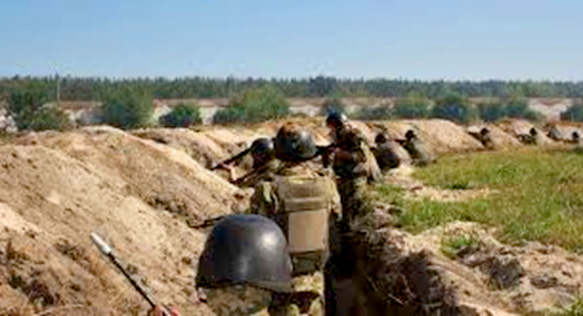
Photo 3: Ukrainian territorial defence.
In the future, military units of territorial defence perform combat tasks both independently and in cooperation with military units of the Army of the Armed Forces of Ukraine in all areas of the Russian-Ukrainian front. The forces and means of territorial defence perform other tasks, in addition to conducting hostilities. Namely: covering the state border with the Russian Federation and the Republic of Belarus; fight against sabotage and reconnaissance forces of the enemy; maintenance of law and order in settlements; aiding the State Emergency Service in liquidating emergency situations as a result of missile and air bombardments; other tasks assigned to Territorial Defence. It is common that military units of territorial defence are armed only with small arms and hand-held anti-tank weapons. First of all, they lack armoured vehicles, artillery, anti-tank and air defence equipment. It is important that military units and territorial defence units participate in counteroffensive operations together with military units of the Armed Forces of Ukraine, performing tasks by joint efforts in close cooperation. An important aspect of counteroffensive operations conducted by the Armed Forces of Ukraine is the presence of a general advantage of the Russian Armed Forces in armoured vehicles and artillery, as well as in missile and aviation weapons. Under such conditions, success in counteroffensive operations can be achieved thanks to the military skill of the soldiers and officers of the Armed Forces of Ukraine, their heroism and courage.
The further prospects in the coming months.
According to Clausewitz, "War is the continuation of politics by other means" So, the Russian Federation will lose! It must lose!
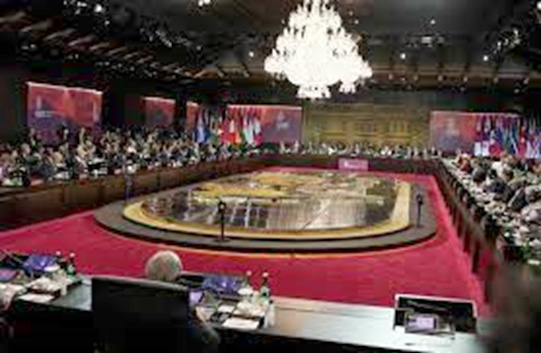
Photo 4: G20.
And the further these prospects accelerate.The main prospects are already known. They will be announced based on the results of the G20. After last missile strikes on the territory of Poland, NATO will also have to have its say.
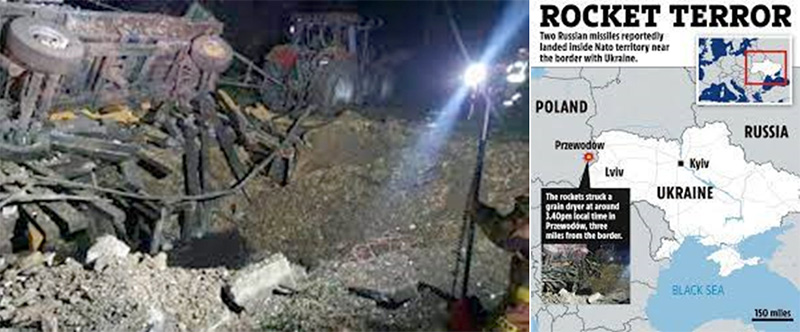
Photo 5: Expected consequence of russian usage of rockets and missiles against Ukraine.
At the same time, after the liberation of the right-bank Kherson region, the initiative is on the side of the Armed Forces of Ukraine. However, the overall superiority in forces and means remains on the side of the Armed Forces of the Russian Federation because of the mobilization and significant replenishment of personnel and heavy weapons. Besides, winter is approaching. And considering the weather and natural conditions of the South and East of Ukraine, the fighting will become more and more positional in nature. Active battles will be fought only in certain areas. It will be the artillery war. Thus, in our opinion, in the coming days it will be known when Russia will lose. Whether it will be in the near future, how it is beneficial for Ukraine and the West. Will it continue in time and freeze, as its benefits Russia? Despite all this, in order to continue successful offensive (counter-offensive) military operations on an operational scale, the Armed Forces of Ukraine desperately need replenishment in tanks, armoured combat vehicles, artillery and ammunition for it, as well as long-range fire damage and anti-aircraft means [5].
Also, do not forget that, the Russian Federation has the world's largest stockpile of tactical nuclear weapons, as well as chemical and biological weapons. Therefore, it cannot be ruled out that blackmail is used to induce Ukraine to end the war on terms favourable to the Russian Federation. The use of these weapons in the event of a threat to Putin's power is not excluded. According to the available information, the Russian Federation has recently conducted nuclear munitions tests. All of them were unsuccessful.
Conclusion
The experience of military operations has shown that the Armed Forces of Ukraine have a number of advantages over the enemy, which allows to a certain extent to successfully conduct operations, battles to repel the armed aggression of the Russian Federation and the liberation of temporarily occupied territories. The main ones include: high motivation of soldiers and officers of the Armed Forces of Ukraine to protect the homeland and defeat the enemy; better organized management of troops (forces) using modern means of control and communication; quality advantage in certain types of Western-made weapons and military equipment, especially high-precision ones; better organized logistics, which allows the Armed Forces of Ukraine to provide combat operations at the required level. It is important that the Armed Forces of the Russian Federation still maintain a numerical advantage in the means of conducting combat operations, despite significant losses in personnel and weapons and military equipment due to a significant number of mobilized personnel and weapons and military equipment. This allows the Armed Forces of the Russian Federation to hold the occupied territories on the front of active hostilities with a length of near 1,000 km, and to conduct active offensive actions in certain directions. In the future, it is important for the Armed Forces of Ukraine to prepare powerful reserves armed with modern weapons and trained personnel as soon as possible. These groups of troops could conduct offensive (counter-offensive) operations in selected directions, inflict significant losses on the enemy and liberate the occupied territories of Ukraine [6]
Citate:
APA 6th Edition
Semenenko, V. i Lobko, M. (2023). Russian-Ukrainian war: preparation, execution, future prospects. National security and the future, 24 (2), 31-40. https://doi.org/10.37458/nstf.24.2.2
MLA 8th Edition
Semenenko, Viacheslav i Myhailo Lobko. "Russian-Ukrainian war: preparation, execution, future prospects." National security and the future, vol. 24, br. 2, 2023, str. 31-40. https://doi.org/10.37458/nstf.24.2.2 Citirano DD.MM.YYYY.
Chicago 17th Edition
Semenenko, Viacheslav i Myhailo Lobko. "Russian-Ukrainian war: preparation, execution, future prospects." National security and the future 24, br. 2 (2023): 31-40. https://doi.org/10.37458/nstf.24.2.2
Harvard
Semenenko, V., i Lobko, M. (2023). 'Russian-Ukrainian war: preparation, execution, future prospects', National security and the future, 24(2), str. 31-40. https://doi.org/10.37458/nstf.24.2.2
Vancouver
Semenenko V, Lobko M. Russian-Ukrainian war: preparation, execution, future prospects. National security and the future [Internet]. 2023 [pristupljeno DD.MM.YYYY.];24(2):31-40. https://doi.org/10.37458/nstf.24.2.2
IEEE
V. Semenenko i M. Lobko, "Russian-Ukrainian war: preparation, execution, future prospects", National security and the future, vol.24, br. 2, str. 31-40, 2023. [Online]. https://doi.org/10.37458/nstf.24.2.2
Literature:
1. Semenenko V. Russia’s Total War: A Challenge and a Threat to Europe. / V. Semenenko, A. Ivashenko // National Security and the Future. - 2022. - Vol. 23. No 2. Access mode: https://doi.org/10.37458/nstf.23.2.2.
2. Military Aspects of Countering Hybrid Aggression: Ukrainian Experience. NORTH ATLANTIC TREATY ORGANIZATION. SCIENCE AND TECHNOLOGY ORGANIZATION. AC/323 (SAS-161) TP/999. STO TECHNICAL REPORT. TR-SAS-161. www.sto.nato.int.
3. Frolov V. Formation of a promising model of organization of defence of Ukraine / V. Frolov, V. Semenenko // Science and Defence. - 2019. - № 3. - Access mode: https://doi.org/10.33099/2618-1614-2019-8-3-3-9.
4. Frolov V. The organization of the territorial defence of Ukraine in the conditions of a hybrid war with Russia / V. Frolov, V. Semenenko // Science and Defence. - 2021. - № 2. - Access mode: https://doi.org/10.33099/2618-1614-2021-15-2-8-16.
5. Lobko M. Joint operation as the main form of repulse of armed aggression of the "hybrid" type. / M. Lobko // Science and Defence. - 2021. - № 2. - Access mode: https://doi.org/10.33099/2618-1614-2021-15-2-24-33.
6. Sirotenko A. Fundamentals of the Comprehensive Use of Military and Non-Military Forces and Means to Counter the Hybrid Agression. / V. Semenenko, A. Sirotenko // National Security and the Future. - 2022. - Vol. 23. No 2. Access mode: https://doi.org/10.37458/nstf.23.2.1.